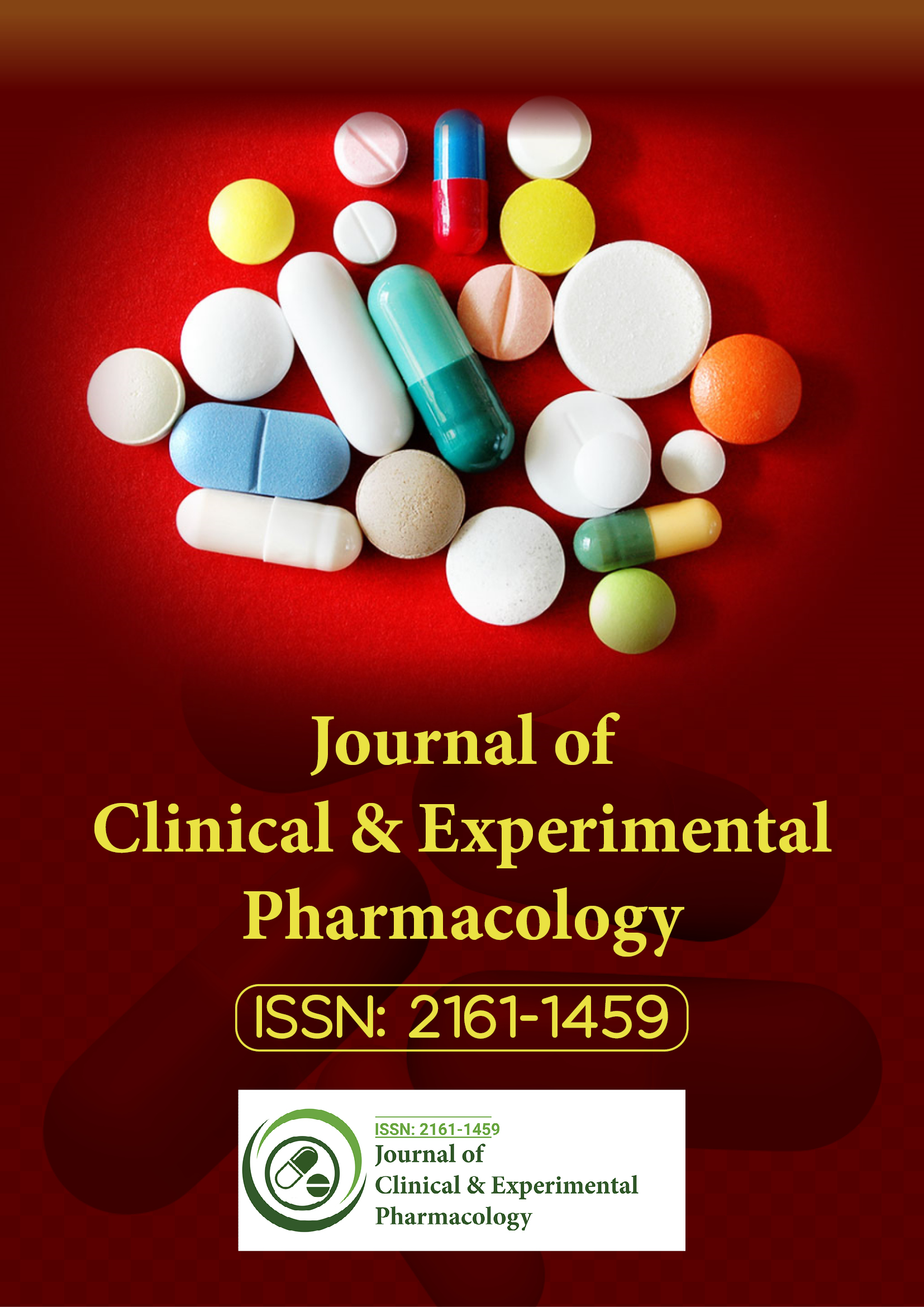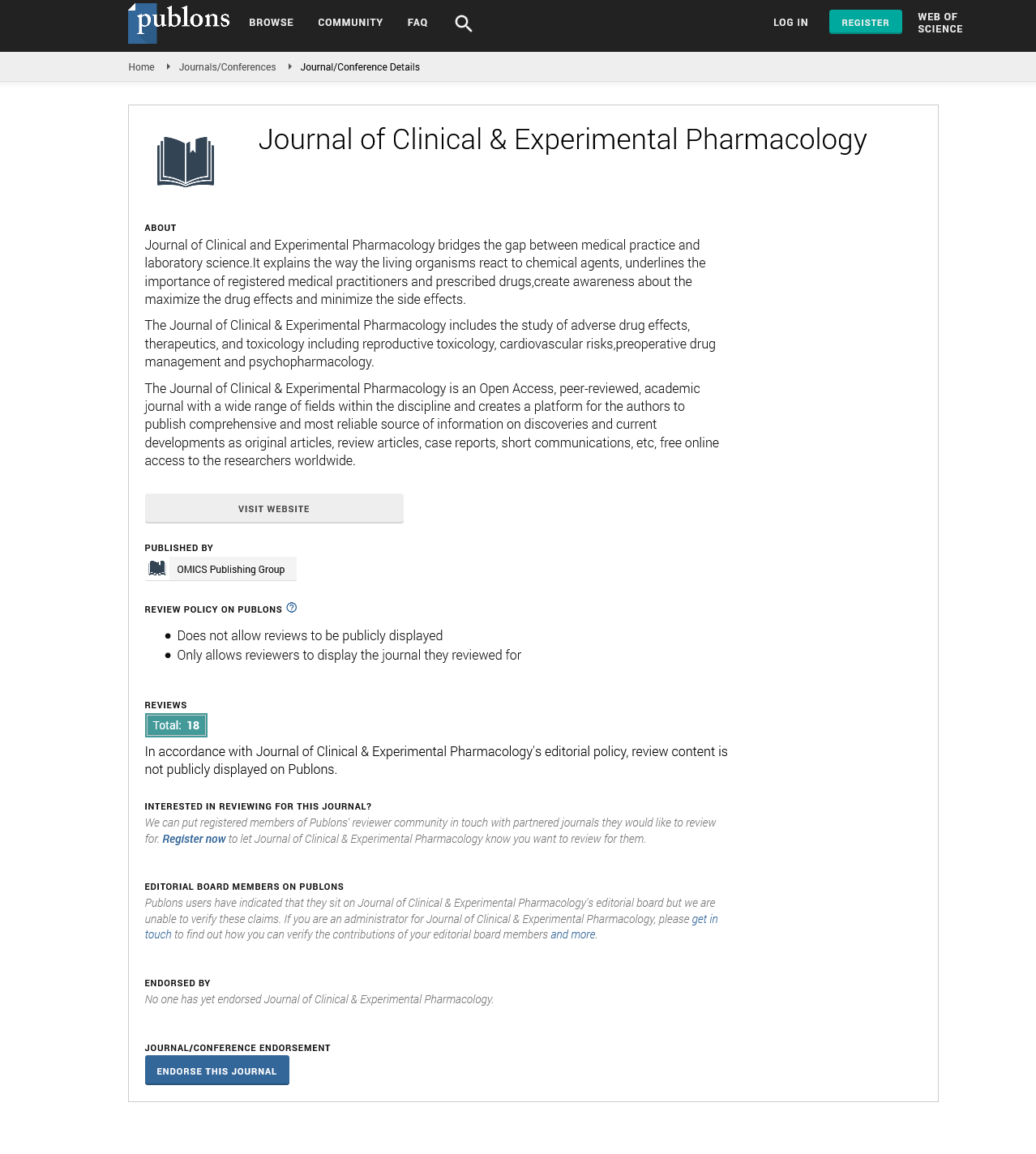Indexed In
- Open J Gate
- Genamics JournalSeek
- China National Knowledge Infrastructure (CNKI)
- Ulrich's Periodicals Directory
- RefSeek
- Hamdard University
- EBSCO A-Z
- OCLC- WorldCat
- Publons
- Google Scholar
Useful Links
Share This Page
Journal Flyer

Open Access Journals
- Agri and Aquaculture
- Biochemistry
- Bioinformatics & Systems Biology
- Business & Management
- Chemistry
- Clinical Sciences
- Engineering
- Food & Nutrition
- General Science
- Genetics & Molecular Biology
- Immunology & Microbiology
- Medical Sciences
- Neuroscience & Psychology
- Nursing & Health Care
- Pharmaceutical Sciences
Opinion Article - (2025) Volume 15, Issue 2
Pharmacological Interventions at the Molecular and Cellular Scale: Techniques and Therapeutic Relevance
Zhao Fein*Received: 24-Mar-2025, Manuscript No. CPECR-25-28868; Editor assigned: 26-Mar-2025, Pre QC No. CPECR-25-28868 (PQ); Reviewed: 10-Apr-2025, QC No. CPECR-25-28868; Revised: 18-Apr-2025, Manuscript No. CPECR-25-28868 (R); Published: 25-Apr-2025, DOI: 10.35248/2161-1459.25.15.478
Description
Molecular and cellular pharmacology is a discipline that explores how drugs interact with biological systems at the molecular and cellular levels. It provides insight into how chemical substances influence physiological processes through specific interactions with receptors, enzymes, ion channels and signaling pathways. Understanding these mechanisms is essential for drug discovery, therapeutic design and the evaluation of drug efficacy and safety. This field connects principles from molecular biology, biochemistry and cell physiology to explain how pharmacological agents produce their effects. It also investigates how cells respond to these agents, including mechanisms of adaptation, resistance and toxicity.
Drug targets and molecular interactions
Most drugs exert their effects by binding to specific molecular targets such as proteins, nucleic acids, or membrane components. The interaction between a drug and its target is determined by its chemical structure and binding affinity.
Receptors: Receptors are proteins that recognize and bind to signaling molecules (ligands) to initiate cellular responses. They include G Protein-Coupled Receptors (GPCRs), ionotropic receptors and nuclear receptors. GPCRs, for example, are involved in numerous physiological functions and are common targets for pharmaceutical agents. Binding of an agonist can activate a receptor, whereas antagonists block its activity.
Enzymes: Drugs that act as enzyme inhibitors can block the activity of enzymes involved in disease processes. For instance, Nonsteroidal Anti-Inflammatory Drugs (NSAIDs) inhibit cyclooxygenase enzymes involved in prostaglandin synthesis, reducing inflammation and pain.
Ion channels: Ion channels regulate the flow of ions across cell membranes and play roles in nerve conduction and muscle contraction. Drugs that modulate ion channel activity are used in the treatment of arrhythmias, epilepsy and other disorders.
Transporters and carriers: Transport proteins regulate the movement of substances into and out of cells. Inhibiting specific transporters, such as the serotonin transporter, alters neurotransmitter levels and underlies the action of many antidepressants.
Cellular signal transduction
Drugs influence cellular processes by modulating signaling pathways that transmit messages from the cell surface to the nucleus. These pathways often involve cascades of protein modifications, such as phosphorylation or ubiquitination.
Second messengers: Activation of receptors often leads to the production of intracellular messengers such as cyclic AMP (cAMP), calcium ions, or Inositol triphosphate (IP3). These molecules amplify the signal and regulate downstream effectors.
Kinase pathways: Protein kinases like MAPKs and PI3Ks play roles in cell growth, apoptosis and differentiation. Many anticancer drugs target these kinases to inhibit tumor progression.
Transcriptional regulation: Some drugs affect gene expression by modulating transcription factors or chromatin structure. For instance, corticosteroids bind to nuclear receptors that directly influence DNA transcription and alter immune responses.
Drug metabolism and transport
The efficacy and duration of a drug's action depend on its metabolism and transport within the body. These processes affect drug concentration at the site of action and influence therapeutic outcomes.
Phase I and phase II metabolism: Phase I reactions involve oxidation, reduction, or hydrolysis, often mediated by cytochrome P450 enzymes. Phase II reactions involve conjugation with molecules such as glucuronic acid to increase water solubility and promote excretion.
Pharmacokinetics: Pharmacokinetics describes how a drug is Absorbed, Distributed, Metabolized and Eliminated (ADME). Understanding these parameters is essential for determining dosage regimens and minimizing toxicity.
Drug transporters: Efflux and uptake transporters such as P-glycoprotein influence drug bioavailability and resistance. Overexpression of efflux pumps in cancer cells, for example, contributes to reduced drug accumulation and treatment failure.
Cellular responses to drugs
Cellular responses to pharmacological agents vary depending on the type of drug, dosage and duration of exposure.
Apoptosis and autophagy: Certain drugs induce programmed cell death in diseased or damaged cells. This mechanism is exploited in chemotherapy, where tumor cells are selectively targeted for destruction.
Resistance mechanisms: Cells may adapt to long-term drug exposure by altering drug targets, activating alternative signaling pathways, or increasing efflux. Resistance is a major challenge in the treatment of infections and cancer.
Toxicity: Off-target effects, metabolic byproducts, or excessive activation of pathways can result in cytotoxicity. Cellular assays and molecular markers are used to assess toxicity during drug development.
Techniques in molecular and cellular pharmacology
A wide range of techniques are employed to study drug action at the molecular and cellular levels:
- Binding assays measure the affinity and specificity of drug–target interactions.
- Western blotting and qPCR assess changes in protein and gene expression.
- Live-cell imaging visualizes drug effects in real time using fluorescent probes.
- CRISPR and RNAi allow researchers to manipulate genes and assess their roles in drug response.
- High-Throughput Screening (HTS) enables the rapid testing of thousands of compounds against a biological target.
Citation: Fein Z (2025). Pharmacological Interventions at the Molecular and Cellular Scale: Techniques and Therapeutic Relevance. J Clin Exp Pharmacol. 15:478.
Copyright: © 2025 Fein Z. This is an open-access article distributed under the terms of the Creative Commons Attribution License, which permits unrestricted use, distribution and reproduction in any medium, provided the original author and source are credited.

